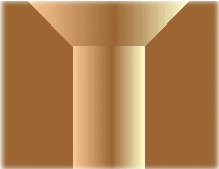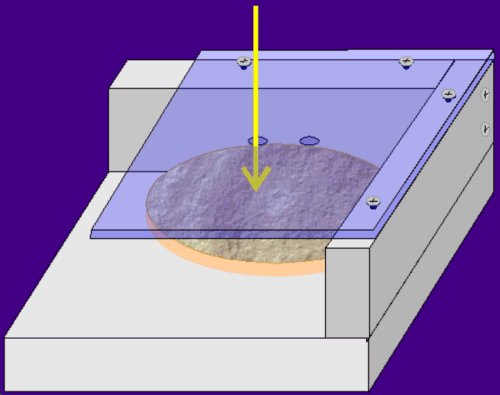
Making Buttons
Have you made your buttons, yet?When I make buttons, I do them in quantities of more than I need, because I use several jigs and many power tools so it's easier to do a bunch at once. That way, I can swiftly return my shop to it's intended purpose of sheltering my car.
As if I ever bother.
You can make buttons from just about any hard substance: wood, metal, bone, antler, old coins. A friend of mine actually took silicon caulk molds of half-a-dozen existing antler buttons and, using 2-part epoxy putty, makes buttons in vast quantities. This page is written assuming moose antler: it's flat, realtively easy to handle, and has a front and back that lets you get two buttons out of each cut. Hopefully, you have lots of power tools.
| ! Please Note: Many states have restrictions about the acquisition and transportation of any animal product, like antler or bone. Call your state's Department of Conservation and find out what the local laws are before you go after materials like this. |
Let's start with how big the buttons should be...I like 1" buttons. It's a good size, the lacings fit under without slipping or struggle to stay, and the proportions look right. You, of course, may do whatever size makes your smoke curl, but test it first.
There is one tool that you must have to make buttons. Welllll, you don't have to have it, but, damn, I wouldn't make buttons without it. The buttons I make are circular, and believe me I have no desire to try to cut a perfect cirle on my band saw. It's far easier to use a hole saw.
For those of you who don't know, a hole saw is a tube shaped blade that mounts on your drill, and it's typically used to cut holes in doors for doorknob assemblies.
"But, wait," you say, "what about the pilot bit in the middle? Doesn't it put a hole in the middle of your button?" And I reply, "It would if we left the pilot bit in..." You see, we're not going to use the thing as is...we're going to make some alterations.
You can polish your buttons, or not. I like to, but it's an extra step. Use a buffing wheel mounted either on a stationary motor (ideal) or your drill press and white polishing compound.

|
Drilling the holes is a two step process. The first holes that you drill should be just big enough for the thread, about 1/8", if that. The second step is to bevel the edges of the holes. I use a 1/4" bit and press it into the button just enough to smooth the edges of the hole. |

